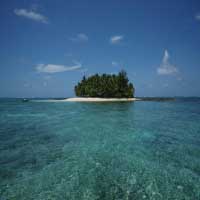Posted On: 09/27/2014 3:05:02 AM
Post# of 9165

Re: nmbr1stckpckr #520
from page 37-emphasis added
37
106
the literature shows a preponderance of
studies using CRI as a rapid DST method after the initial culture isolation of MTBC. A meta-analysis review
of studies investigating CRI for rapid screening of RIF and INH resistance showed a median time to result
was within 7–14 days and that most studies had very high sensitivity and specificity.
107
NDWG has also
published standard operating procedures for the application of NRA and CRI for diagnosis and DST.
108,109
TLA uses a solid medium such as Middlebrook 7H11 and utilizes the microscopic detection of early myco
-
bacterial growth.
110
Colony detection is typically much faster than L-J medium at 7–14 days; a time to
result similar to liquid culture, but at reduced cost.
111 , 11 2
Duplicate plates can be prepared with PNB and,
therefore, discriminate MTBC from other mycobacterial species. While not currently endorsed by WHO,
there are two commercial developments under way to develop TLA products for MTBC culture. Nanologix
Inc. (USA) is producing the BioNanoPore (BNP™) Ultra-Fast Identification Technology. This is a TLA plate
for initial colony incubation that is overlaid with a nitrocellulose filter also pre-coated with agar. After a
preliminary incubation period, the membrane is removed and then applied to a chromogenic dye-based
TLA plate. After 20–30 minutes, the dye is reduced with a dark purple to black colouration of the bacterial
colonies on the membrane.
11 3
Nanologix Inc. has also developed a packaging method in which TLA plates
are flat packed to limit catastrophic plate damage during shipping as compared to conventional vertically
stacked plates. Nanologix Inc. also adds an inert gas to prolong media stability
37
106
the literature shows a preponderance of
studies using CRI as a rapid DST method after the initial culture isolation of MTBC. A meta-analysis review
of studies investigating CRI for rapid screening of RIF and INH resistance showed a median time to result
was within 7–14 days and that most studies had very high sensitivity and specificity.
107
NDWG has also
published standard operating procedures for the application of NRA and CRI for diagnosis and DST.
108,109
TLA uses a solid medium such as Middlebrook 7H11 and utilizes the microscopic detection of early myco
-
bacterial growth.
110
Colony detection is typically much faster than L-J medium at 7–14 days; a time to
result similar to liquid culture, but at reduced cost.
111 , 11 2
Duplicate plates can be prepared with PNB and,
therefore, discriminate MTBC from other mycobacterial species. While not currently endorsed by WHO,
there are two commercial developments under way to develop TLA products for MTBC culture. Nanologix
Inc. (USA) is producing the BioNanoPore (BNP™) Ultra-Fast Identification Technology. This is a TLA plate
for initial colony incubation that is overlaid with a nitrocellulose filter also pre-coated with agar. After a
preliminary incubation period, the membrane is removed and then applied to a chromogenic dye-based
TLA plate. After 20–30 minutes, the dye is reduced with a dark purple to black colouration of the bacterial
colonies on the membrane.
11 3
Nanologix Inc. has also developed a packaging method in which TLA plates
are flat packed to limit catastrophic plate damage during shipping as compared to conventional vertically
stacked plates. Nanologix Inc. also adds an inert gas to prolong media stability
